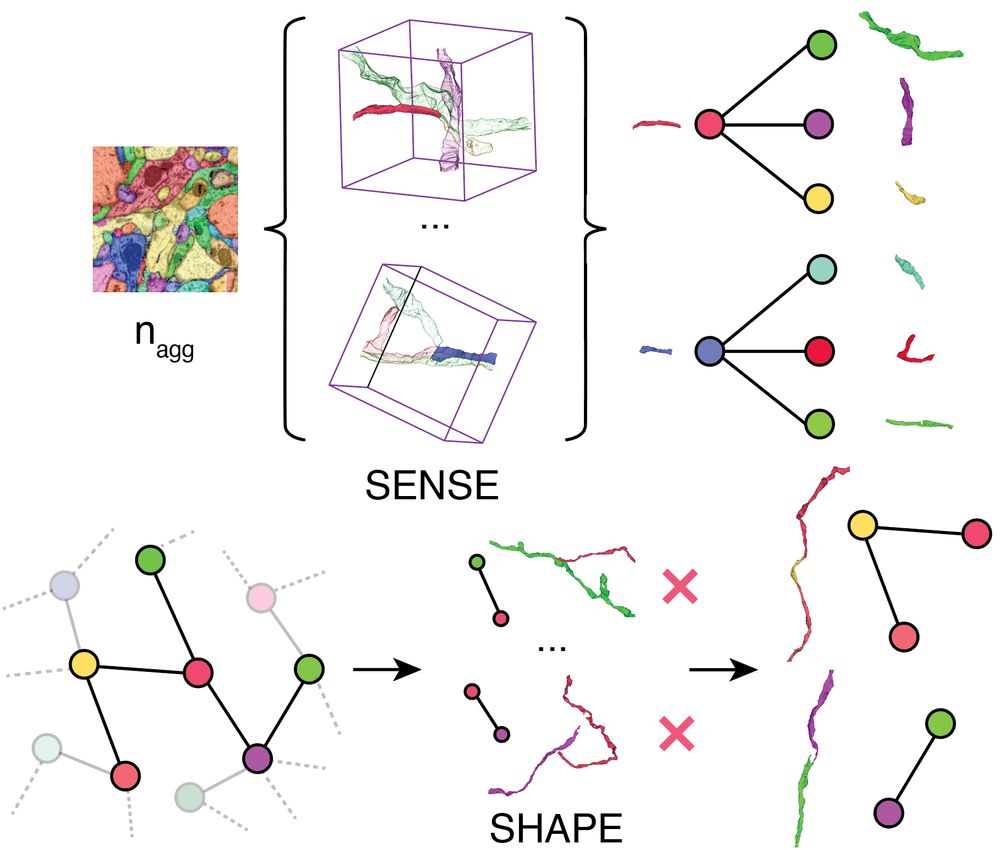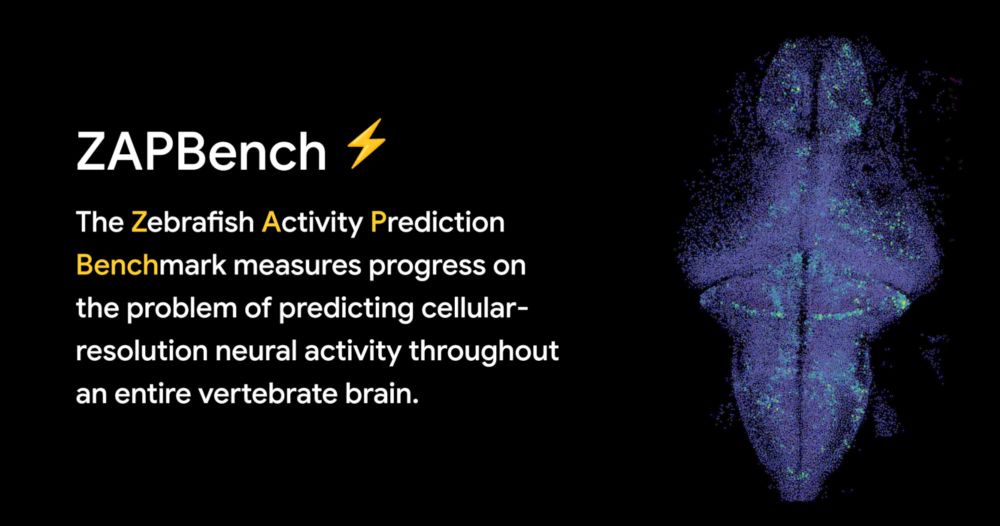👀 For more than 15 years, Janelia researchers have been on a mission to catalogue the neurons of the fly optic lobes & develop genetic tools to study them. This effort has culminated in a complete inventory of all the visual neurons in the fruit fly ➡️ www.nature.com/articles/d41...
03.06.2025 15:56 — 👍 33 🔁 9 💬 1 📌 0
🐁🧠 Results are for a mouse cortex IBEAM-mSEM volume. Work is a collaboration between @GoogleAI & the Hess lab at @HHMIJanelia, who pioneered this EM technique. More soon!
22.05.2025 11:41 — 👍 1 🔁 0 💬 0 📌 0

We find an OOM reduction in splits while maintaining mergers low enough that the traced axons should be useful for automated analysis or serve as an excellent starting point for further manual corrections.
22.05.2025 11:41 — 👍 0 🔁 0 💬 1 📌 0

We focus on the most challenging type of reconstruction (axon tracing) and evaluate PATHFINDER on a scale that ensures statistical significance and lack of bias (over 4 m total path length, all axons in the volume).
22.05.2025 11:41 — 👍 0 🔁 0 💬 1 📌 0

FFN v1.5 segments the volume EM images. Then SENSE defines the agglomeration space. Finally, SHAPE guides an efficient combinatorial search for optimal, morphologically plausible reconstructions.
22.05.2025 11:41 — 👍 0 🔁 0 💬 1 📌 0

PATHFINDER is an AI system designed to address this. It uses specialized models (FFN v1.5, SENSE, SHAPE) to process data across progressively larger spatial scales, currently up to the range of tens of microns.
22.05.2025 11:41 — 👍 0 🔁 0 💬 1 📌 0
Connectomics has made huge strides in recent years. But we can acquire data far faster than we can analyze it. With even insect brains requiring tens of years of manual corrections, proofreading remains a critical and expensive bottleneck, and a mouse brain seems out of reach.
22.05.2025 11:41 — 👍 3 🔁 0 💬 1 📌 0

Wouldn't it be great if we could not only image large connectomic volumes but also completely reconstruct them? And if a whole mouse brain project didn't cost billions?
With the PATHFINDER preprint (www.biorxiv.org/content/10.1...), we preview a future where it doesn't have to.
22.05.2025 11:41 — 👍 33 🔁 13 💬 1 📌 0
We'll present our #ICLR2025 spotlight on ZAPBench this afternoon: 📍 Hall 3 #61!
24.04.2025 06:13 — 👍 23 🔁 7 💬 0 📌 0

ZAPBench
ZAPBench evaluates how well different models can predict the activity of over 70,000 neurons in a novel larval zebrafish dataset.
⚡️ Excited to introduce ZAPBench, our #ICLR2025 spotlight: The Zebrafish Activity Prediction Benchmark measures progress in predicting neural activity within an entire vertebrate brain (70k+ neurons!)
Explore interactive visualizations, datasets, code + paper: google-research.github.io/zapbench
🧠🧪
04.03.2025 15:21 — 👍 39 🔁 20 💬 2 📌 2
Neuro + AI Research Scientist at DeepMind; Affiliate Professor at Columbia Center for Theoretical Neuroscience.
Likes studying learning+memory, hippocampi, and other things brains have and do, too.
she/her.
Optical Connectomics Scientist at E11 Bio.
All things light microscopy, brain architecture & connectomics 🧠🔬🐈⬛
Research Scientist @Bioptimus. Previously at ETH Zürich, Max Planck Institute for Intelligent Systems, Google Research, EPFL, and RIKEN AIP.
aleximmer.github.io
Primarily Robotics and AI. Distinguishing hype-notism from plausibility one press release at a time. rodneybrooks.com/blog people.csail.mit.edu/brooks
Let’s skip witty repartee & discuss fundamental questions. Views are mine, not GMU’s or Virginia’s. Books: http://ageofem.com, http://elephantinthebrain.com
“We are more often frightened than hurt; and we suffer more from imagination than from reality” ― Seneca
More: https://axisofordinary.substack.com/
PhD student @ Harvard with Florian Engert and HHMI Janelia with Misha Ahrens. Searching for the molecular, cellular, and circuit underpinnings of behavior.
neuroscientist, psychiatrist, writer
optogenetics.org
karldeisseroth.org
https://www.amazon.com/Projections-Story-Emotions-Karl-Deisseroth/dp/1984853694
Professor of Applied Physics at Stanford | Venture Partner a16z | Research in AI, Neuroscience, Physics
Post doc in the Fishman and Engert laboratories @Harvard SCRB and MCB exploring the interplay between brain and body.
kjherrera.com
Identifying the neural basis of innate social behaviors using molecular and genetic tools @Harvard @HHMINEWS
HHMI’s Janelia Research Campus in Ashburn, Virginia, is innovating research practices and technologies to solve biology’s deepest mysteries. https://www.janelia.org/
Rural neuroscientist. Connectomics. Protists.
caveat emptor: https://bsky.app/profile/dddavi.bsky.social/post/3k5bnogiq5r2j
Assistant Investigator at Allen Institute for Brain Science. Formerly Janelia, Universität Zürich, and U Mich Physics.
Building bottom-up insight into the brain from synaptic resolution connectomics and making computational tools to help you do that too.
circuit motifs of action selection, execution, & refinement | functional connectomics | assoc prof | lee.hms.harvard.edu
Machine Learning for Microscopy | Prof @ TU Dresden | https://scholar.google.com/citations?user=ZltxyqoAAAAJ
https://www.markowitz.bio/






